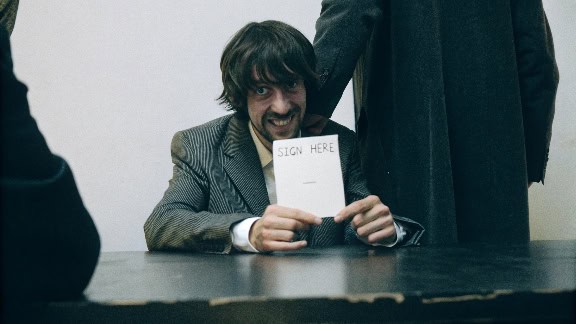
The rain fell hard on the tin roof of the war room at Blockbuster headquarters in 2007. Inside, executives huddled around polished mahogany, their faces lit by the glow of presentation slides showcasing a five-year plan to expand their DVD rental empire. Outside that room, Netflix was quietly shipping its 1 billionth DVD while simultaneously launching a streaming service that would eventually eviscerate Blockbuster’s entire business model.
The Blockbuster team wasn’t asking, “How are people’s entertainment consumption habits changing?” They were asking, “How do we open more stores?” They had already decided on their solution before properly understanding the problem. By 2010, they filed for bankruptcy.
This isn’t a story about Blockbuster. It’s a story about you, me, and every SEO professional who’s ever approached a client with answers before truly understanding their questions.
In the SEO world, we’ve become addicted to solutions. We carry them around like hammers, turning every client problem into a nail.
“Need more traffic? Let’s build more links.”
“Rankings dropping? Let’s add more content.”
And by far my favorite hallmark of complete incompetence: “Let’s optimize your metadata.”
These aren’t inherently wrong approaches. They’re just incomplete. They’re the SEO equivalent of a doctor prescribing antibiotics before examining the patient.
I once experienced an agency that spent six months and $50,000 building links to a client’s financial services site. Rankings barely budged. Traffic increased by a measly 12%. The agency’s explanation? “We need more budget for more links.”
What they missed was that the client’s site had fundamental technical issues. No amount of link-building could fix what was essentially a broken foundation.
They had fallen in love with their solution rather than the problem.
“SEO is just content and links.” It’s the founding truism of search engine optimization. It’s also completely useless (and most SEOs know this).
This statement is technically true in the same way that “Basketball is just running and throwing” is technically true. It reduces a complex, nuanced discipline to its most basic components while ignoring the artistry, strategy, and contextual awareness that separates the professionals from the pretenders.
Yes, content and links form the backbone of SEO. But suggesting that’s all there is to it is like saying fitness is just diet and exercise. True, but utterly unhelpful.
This oversimplification creates the dangerous illusion that SEO success is simply a matter of volume and budget. Just create more content. Build more links. Outspend your competitors.
But the digital landscape is littered with the remains of high-budget SEO campaigns that failed to deliver results. Meanwhile, smaller players with fraction-sized budgets regularly outperform industry giants.
Take Beardbrand, for example. When Eric Bandholz launched his beard care company in 2015, he was competing against established grooming brands with marketing budgets hundreds of times larger than his. Rather than trying to outspend them, he identified a problem no one else was solving: the lack of high-quality educational content for beard care.
By creating a beard care glossary, Beardbrand built an organic search presence that dwarfed competitors spending millions on traditional SEO.
They fell in love with their audience’s problems rather than conventional SEO solutions. All with using a very common SEO technique.
When predetermined solutions fail, mediocre SEOs play the rationalization game:
“We didn’t have enough budget.” “Google’s algorithm changed.” “Your industry is too competitive.” “We need more time.”
Sometimes these excuses are valid. Often, they’re just convenient explanations that protect egos and retain clients. They shift blame from the strategy to external factors beyond anyone’s control.
The truth is harder to swallow: many SEO campaigns fail not because they lack resources, but because they begin with solutions instead of questions.
A major retail brand once approached me after firing their previous SEO agency. They had spent 18 months creating and optimizing product category pages based on high-volume keywords. Traffic was up, but conversions remained flat. The agency blamed the client’s website design and suggested a redesign.
When we examined their analytics, we discovered something the previous agency had missed: while their main category pages barely converted, their buying guides and comparison articles had conversion rates 4-5 times higher than the site average. The problem wasn’t the website design; it was that they were attracting the wrong traffic with their keyword-driven content strategy.
By shifting their content strategy to focus on educational content that aligned with the buyer’s journey, conversions increased by 70% within three months—with no additional budget or redesign required.
The rise of AI writing tools has made it easier than ever to create content at scale. Any SEO can now generate thousands of words on any topic, complete with optimized headings, metadata, and all the on-page elements that check the technical SEO boxes.
But this technological advancement has paradoxically made creative problem-solving more valuable, not less.
When everyone has access to the same content generation tools, the ability to identify unique opportunities becomes the true differentiator. The question is no longer “Can we create content?” but “Should we create this content, and if so, how can we make it genuinely valuable in ways AI alone cannot?”
Consider the case of Andy Crestodina’s Orbit Media Studios. Rather than competing with larger agencies by creating more of the same content, they invested in creating an annual blogging survey that has become an industry benchmark. This single piece of research generates hundreds of backlinks annually and positions them as thought leaders in a crowded space.
They didn’t just ask, “How do we create more content?” They asked, “What content would actually be valuable to our audience that no one else is creating?” They fell in love with the problem.
Great SEOs don’t start with solutions. They start with questions—lots of them.
“Why is this page underperforming?” “What does the audience actually need that they’re not getting?” “What patterns in our data are we missing?” “Why did this competitor suddenly gain visibility?” “What assumptions are we making that might be wrong?”
They treat each SEO challenge as a unique puzzle requiring a custom solution, not a templated approach. They’re detectives, not assembly line workers.
When Zapier wanted to improve their organic search presence, they could have followed the standard playbook: keyword research, content optimization, link building. Instead, they became obsessed with understanding how their users actually described technical problems.
They discovered that most people searching for automation solutions didn’t use industry terminology. They used plain language descriptions of their problems: “send gmail attachments to dropbox” instead of “email attachment file automation workflow.”
This insight led them to create thousands of specific landing pages addressing these plain-language queries, capturing traffic that their more technically-minded competitors were missing entirely. Their obsession with the problem—how non-technical users describe automation needs—led to a solution no generic SEO approach would have uncovered.
In a world increasingly shaped by artificial intelligence, our uniquely human capacity for networked thinking becomes our greatest advantage.
AI can generate content. It can analyze data. It can even suggest optimizations. But it cannot (yet) make the creative leaps that come from connecting seemingly unrelated dots. It cannot feel the frustration of a user struggling to find information. It cannot intuit the emotional reasons someone might choose one solution over another.
These human capabilities aren’t reserved for a select few “creative types.” They’re skills we all possess that can be developed through practice and intention.
The best SEOs I know keep idea journals. They read widely outside their field. They talk to customers directly. They question their own assumptions regularly. They’re willing to sit with problems longer before jumping to solutions.
A few years ago, I worked with a local business struggling to compete with national chains. Their website traffic was decent but conversions were abysmal. The obvious solution was to optimize their site for conversion, improve their local SEO signals, and build more local links.
But after spending time with the business owner and their customers, I discovered something unexpected: what customers valued most wasn’t their products (which were similar to competitors’) but the owner’s expertise and personalized recommendations.
Rather than pouring resources into standard SEO tactics, we created a series of video consultations where the owner addressed common customer questions. These videos were embedded on product pages and shared on social media. Conversion rates tripled within weeks.
No keyword research or link building campaign would have uncovered that solution. It came from being willing to fall in love with the problem rather than defaulting to standard SEO solutions.
The gap between good and great in SEO isn’t technical knowledge. It’s not budget. It’s not even experience. It’s the willingness to approach each challenge with genuine curiosity and to fall in love with problems before committing to solutions.
This is your competitive advantage in an AI-dominated future. Machines can optimize. Humans can empathize, connect, and create.
So the next time you’re faced with an SEO challenge, resist the urge to immediately propose solutions. Instead, pick up your shovel and start digging into the problem. Ask questions. Challenge assumptions. Look for patterns others have missed.
Become obsessed with understanding before you become focused on solving.
Your clients don’t need another SEO who can recite best practices and generate content at scale. They need someone who can see what others miss and find opportunities hiding in plain sight.
The rain still falls on boardrooms where people clutch their predetermined solutions. But somewhere, there’s an SEO professional staring at a problem from all angles, asking better questions, and discovering the opportunity everyone else has missed.
Be that professional.
